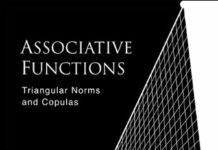
Ebook Info
- Published: 2011
- Number of pages:
- Format: PDF
- File Size: 3.33 MB
- Authors: Claudi Alsina
Description
Theorems and their proofs lie at the heart of mathematics. In speaking of the purely aesthetic qualities of theorems and proofs, G. H. Hardy wrote that in beautiful proofs ‘there is a very high degree of unexpectedness, combined with inevitability and economy’. Charming Proofs presents a collection of remarkable proofs in elementary mathematics that are exceptionally elegant, full of ingenuity, and succinct. By means of a surprising argument or a powerful visual representation, the proofs in this collection will invite readers to enjoy the beauty of mathematics, and to develop the ability to create proofs themselves. The authors consider proofs from topics such as geometry, number theory, inequalities, plane tilings, origami and polyhedra. Secondary school and university teachers can use this book to introduce their students to mathematical elegance. More than 130 exercises for the reader (with solutions) are also included.
User’s Reviews
Opiniones editoriales Review On the first page of the preface of their new and lovely book, “Charming Proofs,” Claudi Alsina and Roger Nelsen remind us of The Book that Paul Erdos was fond of invoking when he found a particularly beautiful theorem and proof. This was God’s book, containing the most elegant mathematics; and to say something was straight from the Book was the greatest compliment of all. To me Claudi Alsina and Roger Nelsen deserve their own place in the Book of mathematical expositors. Time and again, book after book, they have given us reminders of why we became mathematicians. And for me this book is the topping on the cake. Proof after proof, reminded me of my earliest days studying mathematics and marveling at its beauty. The authors have exquisite taste. I believe anyone who went on to do serious mathematics will find one of their favorites here, lovingly presented. In short, this is a charming book, by charming authors about charming proofs. Every new book they write is a cause for celebration. –Sol Garfunkel, Executive Director, COMAP
What is a charming proof? Alsina (Polytechnic Univ. of Catalonia, Spain) and Nelsen (Lewis and Clark College) cite D. Schattschneider (“Beauty and Truth in Mathematics”) in Mathematics and the Aesthetic, edited by N. Sinclair, D. Pimm, and W. Higginson (CH, Jul’07, 44-6282): such a proof should exhibit elegance, ingenuity, and insight, and it should provide connections and paradigms. A charming proof should be eligible for inclusion in Erdos’s mythical “book,” which contains the most perfect proofs possible of all mathematical results. M. Aigner and G. Ziegler’s Proofs from the Book (4th ed., 2010) contains a sampling of such proofs, and the book under review, even though there is some overlap, provides more. The overall flavor here is more geometric and visual, and less analytic, than Aigner and Ziegler’s work. Each chapter provides challenge exercises with solutions. A brief listing of section topics includes triangulation of convex polygons, the Erdos-Mordell inequality, an angle-trisecting cone, the quadratrix of Hippias, and the Wallis product. Not surprisingly, the charm of the contents means that in sum this is a charming book. It would be a good supplement to introduction-to-proof courses, as well as topics for discussions in mathematics clubs. Summing Up: Highly recommended. Lower- and upper-division undergraduates and general readers. –D. Robbins Trinity College, CHOICE MagazineThis is a collection of remarkable proofs, all using elementary mathematical or geometrical arguments, and all very simple but often extraordinarily powerful. While some will be well known, I imagine that almost every reader will find material here that they have not encountered before. Although the book is a mathematics book, I feel sure that some of the theorems would have direct relevance to statistics. For example, how about: for any even number of different points distributed inside a circle it is always possible to draw a line across the circle missing every point and such that exactly half lie on each side of the line. Surely this can find application in segmentation analysis, for applications in marketing and other areas. In addition to the proofs themselves, there are over 130 “challenges” aimed at stimulating the reader to create similar such “charming proofs.” Solutions to these challenges appear at the end of the book. I cannot help but feel that working carefully through the proofs in this book would materially improve one’s creative powers and ability to think laterally. –David J. Hand, International Statistical ReviewGiven my joyful experiences of exploring challenging problems in middle school and in high school I have a soft spot for elegant problems that are accessible to motivated students who don’t have any background in advanced mathematics. And, I have a soft spot for MAA books because they were among the first math books I devoured, specifically their MAA contest prep books. What I particularly enjoy about Charming Proofs is its mix of excellent writing, great illustrations, and interesting yet accessible problems. To be honest, this is the case with every MAA problem-solving book I can think of. I may be biased but I suspect that many would agree with my overall assessment of MAA books of this type. Here are some interesting challenges from the book: Prove that the vertex angles of any star pentagon sum to 180 degrees. Is it possible to construct an equilateral lattice triangle? Does a version of Pick’s Theorem hold for three-dimensional lattice polyhedra? Prove that Heron’s formula and the Pythagorean theorem are equivalent. Is it true that three times the sum of three squares is always a sum of four squares? Prover there are infinitely many dissection proofs of the Pythagorean theorem. Charming Proofs is one of those great books that you can pick up, choose a chapter that strikes your fancy, work through the chapter, then be rewarded with a number of challenging problems to explore. I should warn you that the book is biased towards geometric and visual problems rather than analytical ones. This makes sense given that visual problems lend themselves better to charming (visual) solutions. I’d like to address the concern that some people have with the price of MAA books. This book, for example, lists for nearly $60 USD. This is certainly more expensive than any popular math book written for the general public. From that perspective the book is indeed expensive. But, if you consider the other extreme, math text books that can retail for $100 or more, Charming Proofs is inexpensive. Whether the book is expensive or not, I believe, depends on how you’re going to use the book. If you’re going to use the book as a text and teach yourself the material, and Charming Proofs is of textbook quality, then you’re looking at a $60 textbook. If you’re looking for a more casual involvement with a book then you can see if your library can get you a copy. Many libraries have partnerships with libraries throughout the country and can get you many books that they don’t hold. In this particular case, Amazon.com sells the book for as little as $21.99 (new) from their partners so the cost is not prohibitive. For those of you interested in a review of Charming Proofs from a mathematician’s perspective I heartily recommend Alex Bogomolyny’s review at Cut the Knot. –Sol, Making Math fun and accessible Book Description A collection of remarkable proofs that are exceptionally elegant, and thus invite the reader to enjoy the beauty of mathematics. Book Description Charming Proofs presents a collection of remarkable proofs in elementary mathematics that are exceptionally elegant. By means of a surprising argument or powerful visual representation, the proofs invite the reader to enjoy the beauty of mathematics and to develop the ability to create proofs themselves. From the Back Cover Theorems and their proofs lie at the heart of mathematics. In speaking of the purely aesthetic qualities of theorems and proofs, G. H. Hardy wrote that in beautiful proofs there is a very high degree of unexpectedness, combined with inevitability and economy. Charming Proofs present a collection of remarkable proofs in elementary mathematics that are exceptionally elegant, full of ingenuity, and succinct. By means of a surprising argument or a powerful visual representation, the proofs in this collection will invite readers to enjoy the beauty of mathematics, to share their discoveries with others, and to become involved in the process of creating new proofs.Charming Proofs is organized as follows. Following a short introduction about proofs and the process of creating proofs, the authors present, in twelve chapters, a wide and varied selection of proofs they consider charming, Topics include the integers, selected real numbers, points in the plane, triangles, squares, and other polygons, curves, inequalities, plane tilings, origami, colorful proofs, three-dimensional geometry, etc. At the end of each chapter are some challenges that will draw the reader into the process of creating charming proofs. There are over 130 such challenges. Charming Proofs concludes with solutions to all of the challenges, references, and a complete index. As in the authors previous books with the MAA (Math Made Visual and When Less Is More), secondary school and college and university teachers may wish to use some of the charming proofs in their classrooms to introduce their students to mathematical elegance. Some may wish to use the book as a supplement in an introductory course on proofs, mathematical reasoning, or problem solving. About the Author Claudi Alsina received his BA and Ph.D. in Mathematics from the University of Barcelona. His postdoctoral studies were at the University of Massachusetts, Amherst. As Professor of Mathematics at the Technical University of Catalonia, Claudi has delivered a wide range of research papers, publications and lectures on mathematics and mathematics education. His latest books include Associative Functions (co-authored with M. J. Frank and B. Schweizer, WSP, 2006) and Math Made Visual (co-authored with Roger B. Nelsen, MAA, 2006).Roger B. Nelsen received his BA in Mathematics from DePauw University and his Ph.D. from Duke University in 1969. He taught mathematics and statistics at Lewis and Clark College for forty years before his retirement in 2009. His previous books include Proofs Without Words (MAA, 1993) and An Introduction to Copulas (Springer, 1999). Leer más
Reviews from Amazon users which were colected at the time this book was published on the website:
⭐This is an enjoyable, challenging, and well-written book! It complements my study of pure math and introduces me to many fields of math. The answers are in the back of the book to the challenges, but I would recommend not looking until you finish!
⭐
⭐This is a really interesting piece of work putting together some of the the more interesting proofs. Readily accessible to all.
⭐
⭐Un libro di classe!
⭐
⭐This is a nice collection of mathematical facts and elegant proofs for them.The emphasis is on “elegant proofs”. I have just started to read it, and Iam looking forward to the many more chapters to come!Errors noticed so far:page xxii, last line: this is embarrassingly wrong!page 35, section 2.12: first sentence is misleading (see second sentence).
⭐
Keywords
Free Download Charming Proofs: A Journey into Elegant Mathematics (Dolciani Mathematical Expositions) in PDF format
Charming Proofs: A Journey into Elegant Mathematics (Dolciani Mathematical Expositions) PDF Free Download
Download Charming Proofs: A Journey into Elegant Mathematics (Dolciani Mathematical Expositions) 2011 PDF Free
Charming Proofs: A Journey into Elegant Mathematics (Dolciani Mathematical Expositions) 2011 PDF Free Download
Download Charming Proofs: A Journey into Elegant Mathematics (Dolciani Mathematical Expositions) PDF
Free Download Ebook Charming Proofs: A Journey into Elegant Mathematics (Dolciani Mathematical Expositions)

